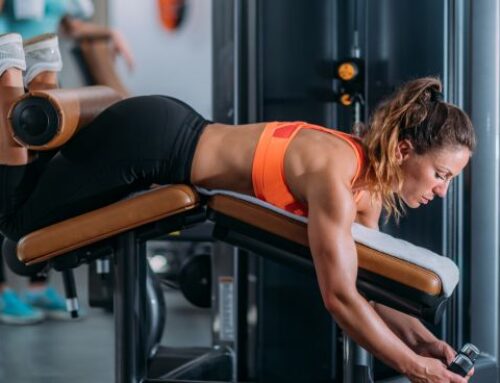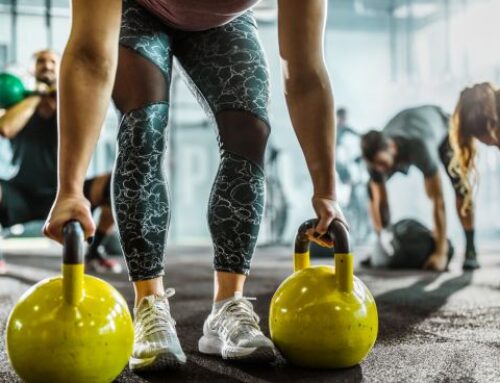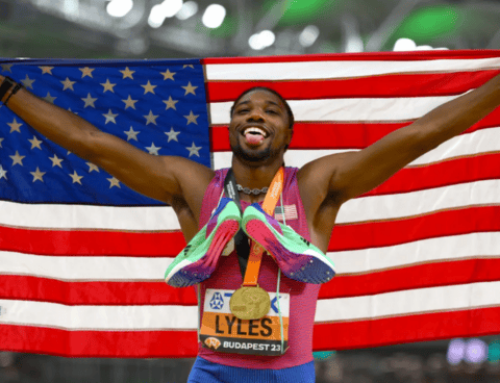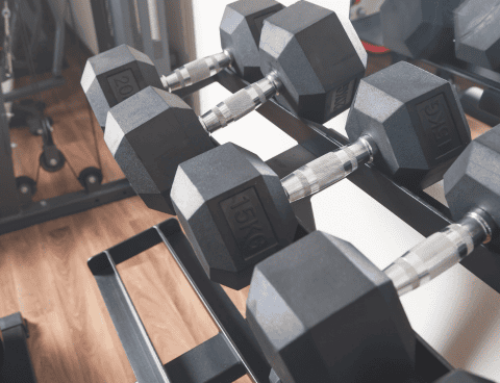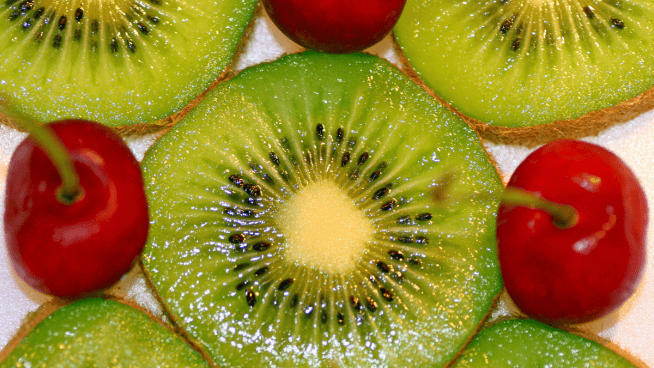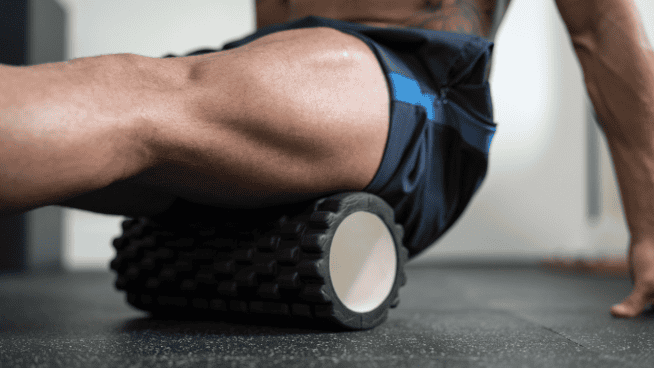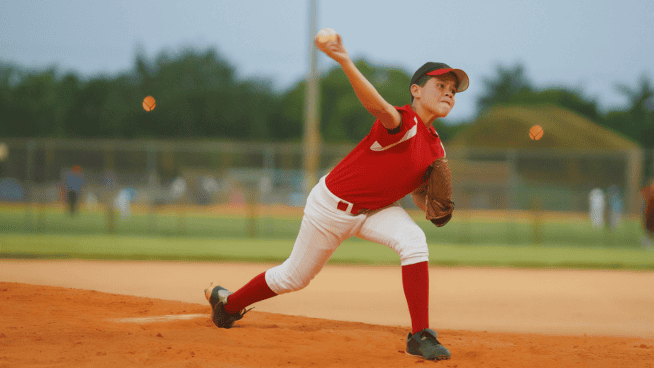Why Calf Raises Are a Waste of Time
Working your calf muscles is typically considered part of a complete lower-body workout. You need to work your calves, because you can’t ignore such a large and important muscle group. But the best way to train these muscles may be different from what you think.
Calf Anatomy
Your calves are comprised of two muscles: the gastrocnemius and the soleus. Both are responsible for plantarflexion, or extending the ankle. The gastrocnemius is located in the bulge of your calf, comprised of 18 to 64 percent fast-twitch muscle fibers. It’s ideally suited for power moves such as sprinting and jumping, but the amount of power it can generate depends on the number of fast-twitch fibers. The more, the better. The soleus is located behind the grastrocnemius. It consists of 80 to 100 percent slow-twitch fibers, making it ideal for endurance activity like walking or jogging.
“The calves are the first major muscles that activate after ground contact,” says Mark Kovacs, a world-renowned performance physiologist and executive director of the International Tennis Performance Association. “Athletes need to have good strength in both the gastrocnemius and soleus to be able to effectively push off the ground.”
Training Your Calves
We all agree you need to work your calf muscles. The traditional go-to exercise is the Calf Raise. The movement is simple—you extend your ankles against resistance to strengthen your calves. Do enough reps, and you’ll feel like your calves are about to pop out of your legs.
So, this is effective, right? Yes, but only to an extent.
Isolating your calves with this type of movement builds a foundation of strength, especially if you are new to strength training. But, so do exercises like Squats and Lunges, which also hit other muscle groups. “The Calf Raise establishes a base level of strength,” says Kovacs. “If you’re doing compound movements, then you’re getting some pretty good calf development already. Isolated strength work isn’t necessarily a bad thing, but it may not be the best use of your time.”
Also, it’s not critical for your calf muscles to be super strong. It’s actually very difficult to increase calf size. You don’t want weak calves, but it’s more important that your calves are powerful. Rapid calf contractions limit ground contact time when running, which helps you run faster. Also, the muscles add power to explosive movements and skills, like jumping or throwing a ball.
Kovacs says, “Doing some isolated work can be productive, but make sure it’s a higher velocity isolated calf movement.” Rather than loading up the Calf Raise machine, he recommends Single-Leg Hops or Taps, but with the knee straight. They allow you to isolate the calves in an explosive movement, like Henrik Zetterberg’s Eccentric Calf Raise.
Effective Calf Exercises
Perform each of these exercises with your knees straight but not locked out.
Single-Leg Explosive Calf Raises
- Stand on one foot on a stair with your heel hanging off the step.
- Keeping your knee straight, slowly lower your heel.
- Forcefully extend your ankle as far as range of motion allows.
- Repeat for the specified number of reps.
Sets/Reps: 3×6-8 each leg
Single-Leg Mini-Hurdle Hops
- Set up 6-8 hurdles in a straight line, about 2 feet apart.
- Hop through the hurdles on one leg, spending as little time on the ground as possible.
Sets/Reps: 2-3×6-8 each leg
Single-Leg Box Hops
- Stand on one leg with a 4- to 6-inch box in front of you.
- Hop up to the box, extending your ankles to generate momentum.
- Hop down and immediately repeat.
Sets/Reps: 3×6-8 each leg
RELATED: Why You Should Never Do Leg Extensions
Reference:
Gollnick, P.D., et. al. (1974) “Human soleus muscle: A comparison of fiber composition and enzyme activities with other leg muscles.” Pflügers Archive, 348(3): 247–55.
RECOMMENDED FOR YOU
Why Calf Raises Are a Waste of Time
Working your calf muscles is typically considered part of a complete lower-body workout. You need to work your calves, because you can’t ignore such a large and important muscle group. But the best way to train these muscles may be different from what you think.
Calf Anatomy
Your calves are comprised of two muscles: the gastrocnemius and the soleus. Both are responsible for plantarflexion, or extending the ankle. The gastrocnemius is located in the bulge of your calf, comprised of 18 to 64 percent fast-twitch muscle fibers. It’s ideally suited for power moves such as sprinting and jumping, but the amount of power it can generate depends on the number of fast-twitch fibers. The more, the better. The soleus is located behind the grastrocnemius. It consists of 80 to 100 percent slow-twitch fibers, making it ideal for endurance activity like walking or jogging.
“The calves are the first major muscles that activate after ground contact,” says Mark Kovacs, a world-renowned performance physiologist and executive director of the International Tennis Performance Association. “Athletes need to have good strength in both the gastrocnemius and soleus to be able to effectively push off the ground.”
Training Your Calves
We all agree you need to work your calf muscles. The traditional go-to exercise is the Calf Raise. The movement is simple—you extend your ankles against resistance to strengthen your calves. Do enough reps, and you’ll feel like your calves are about to pop out of your legs.
So, this is effective, right? Yes, but only to an extent.
Isolating your calves with this type of movement builds a foundation of strength, especially if you are new to strength training. But, so do exercises like Squats and Lunges, which also hit other muscle groups. “The Calf Raise establishes a base level of strength,” says Kovacs. “If you’re doing compound movements, then you’re getting some pretty good calf development already. Isolated strength work isn’t necessarily a bad thing, but it may not be the best use of your time.”
Also, it’s not critical for your calf muscles to be super strong. It’s actually very difficult to increase calf size. You don’t want weak calves, but it’s more important that your calves are powerful. Rapid calf contractions limit ground contact time when running, which helps you run faster. Also, the muscles add power to explosive movements and skills, like jumping or throwing a ball.
Kovacs says, “Doing some isolated work can be productive, but make sure it’s a higher velocity isolated calf movement.” Rather than loading up the Calf Raise machine, he recommends Single-Leg Hops or Taps, but with the knee straight. They allow you to isolate the calves in an explosive movement, like Henrik Zetterberg’s Eccentric Calf Raise.
Effective Calf Exercises
Perform each of these exercises with your knees straight but not locked out.
Single-Leg Explosive Calf Raises
- Stand on one foot on a stair with your heel hanging off the step.
- Keeping your knee straight, slowly lower your heel.
- Forcefully extend your ankle as far as range of motion allows.
- Repeat for the specified number of reps.
Sets/Reps: 3×6-8 each leg
Single-Leg Mini-Hurdle Hops
- Set up 6-8 hurdles in a straight line, about 2 feet apart.
- Hop through the hurdles on one leg, spending as little time on the ground as possible.
Sets/Reps: 2-3×6-8 each leg
Single-Leg Box Hops
- Stand on one leg with a 4- to 6-inch box in front of you.
- Hop up to the box, extending your ankles to generate momentum.
- Hop down and immediately repeat.
Sets/Reps: 3×6-8 each leg
RELATED: Why You Should Never Do Leg Extensions
Reference:
Gollnick, P.D., et. al. (1974) “Human soleus muscle: A comparison of fiber composition and enzyme activities with other leg muscles.” Pflügers Archive, 348(3): 247–55.

